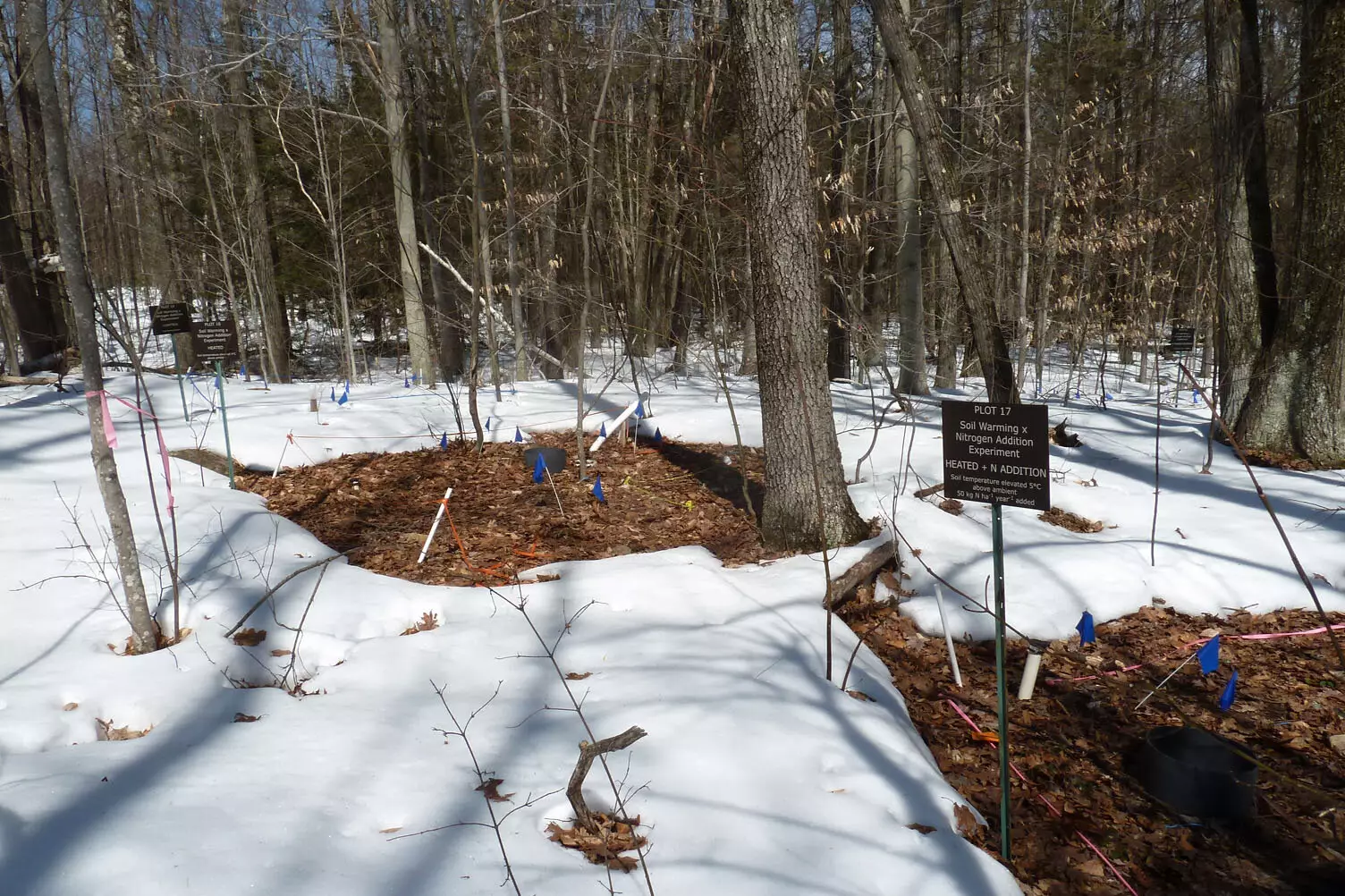The delicate interplay of environmental factors impacting forest ecosystems has become a critical area of study, particularly in regions like New England. With its rich biodiversity and complex ecological networks, understanding how these forests respond to climate change and nitrogen deposition is essential for conservation efforts. Recent research led by scientists at the University of New Hampshire, however, unveils a somewhat surprising outcome that might alter previous assumptions regarding carbon storage in these vital ecosystems.
Traditionally, studies have investigated the impact of climate change, particularly rising temperatures, and nitrogen deposition independently, often focusing on how each factor contributes to carbon loss within forest ecosystems. The new study, as published in *Nature Ecology & Evolution*, marks a significant shift in this approach by examining the combined effects of elevated temperatures and nitrogen enrichment on soil carbon dynamics. This dual examination arises from a long-term research initiative at the Harvard Forest Long-Term Ecological Research site in Massachusetts, where scientists replicated scenarios of warming and nitrogen fertilization over 16 years, thus establishing a more holistic view of forest responses to multi-faceted environmental changes.
Contrary to expectations, the findings indicate that soil carbon levels remained surprisingly stable under the influence of both warming and nitrogen addition. The researchers attributed this stability to an increase in below-ground plant inputs, particularly through root turnover. As plant roots grow and decompose, they contribute new carbon back into the soil, effectively counteracting the losses that might occur due to microbial respiration exacerbated by warmer conditions. This understanding shifts the narrative regarding the vulnerability of soil carbon in forest ecosystems faced with climate change, providing new hope that the predicted losses may not be as severe as once thought.
The Context of Nitrogen Deposition
To grasp the implications of this study, it’s crucial to acknowledge the historical context surrounding nitrogen deposition in New England. While the region has recorded a slight decline in nitrogen deposition rates over time, current levels remain significantly elevated—approximately five to six times higher than pre-industrial benchmarks. This surplus nitrogen, primarily from anthropogenic sources, can precipitate harmful effects on forest health and aquatic ecosystems. However, the study’s findings suggest that while nitrogen is often perceived as detrimental, it may play a complex role in conjunction with other factors such as climate change, potentially becoming a key player in maintaining soil carbon stability.
As researchers convey insights from their findings, the implications extend far beyond academic inquiry; they underscore profound considerations for forest management and conservation strategies. By revealing the importance of plant-soil interactions amid multiple environmental stressors, conservationists can better devise approaches to enhance carbon sequestration techniques. This is particularly relevant in ongoing discussions about sustainable land practices and the need for adaptive management strategies that respond to the evolving challenges posed by climate change.
This groundbreaking study encourages an expanded perspective on how we view forest ecosystems’ responses to climate change and nitrogen enrichment. As Melissa Knorr emphasizes, understanding the interactions between multiple stressors offers a fuller picture of our ecosystems’ behavior and resilience. As New England continues to navigate the complex consequences of environmental change, incorporating these findings into effective conservation practices could profoundly influence how forests are managed for future generations. This research not only informs scientific discourse but also serves as a clarion call to embrace the interconnectedness of environmental factors in safeguarding our planet’s crucial carbon sinks.



Leave a Reply